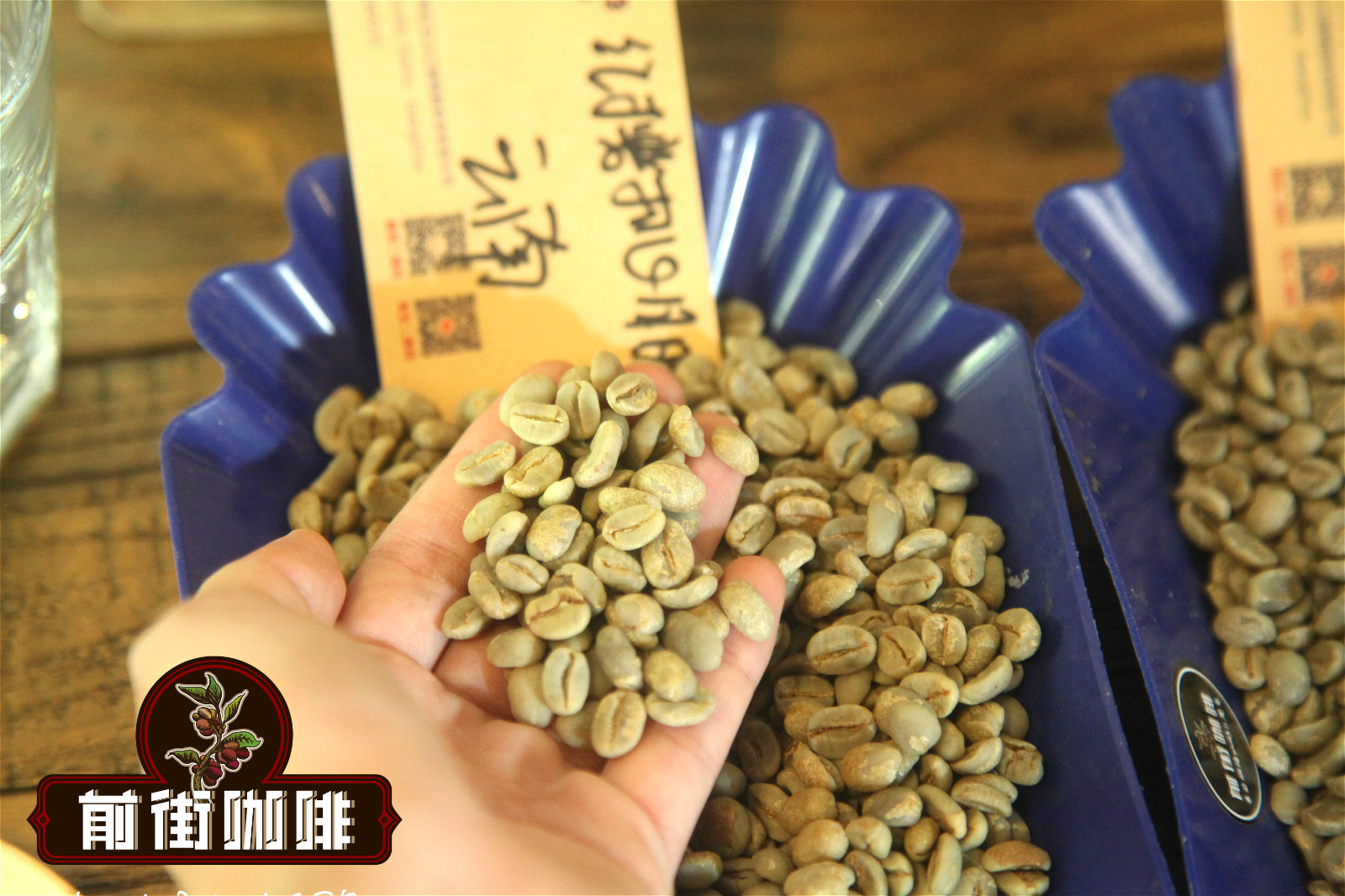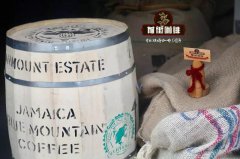Which country is the highest Arabica coffee grower in the world?

Professional coffee knowledge exchange more coffee bean information please follow the coffee workshop (Wechat official account cafe_style)
Ecuador may be the highest Arabica coffee grower in the world.
Arabica Coffee Tree was first introduced to Ecuador (Ecuador) in 1952 and its coffee quality is very good, especially the coffee harvested in early June.
Ecuadorian coffee beans can be divided into two varieties: Galapagos and Gigante, both of which have the characteristics of large granules and heavy weight.
Ecuadorian coffee can be divided into first class (No) according to its quality. 1) and Extra Superior.
They are mainly exported to the Nordic countries of Scandinavia.
The main problem facing coffee producers is their efforts to maintain stable quality.
The coffee here is generally well-balanced and refreshing, with a unique aroma.
Ecuador is one of the few countries in South America that produces both Arabica and Rubinstein coffee.
However, as the land suitable for Arabica coffee trees is decreasing, the production of Rubinstein coffee is gradually increasing.
The best Arabica coffee comes from the Andes, especially the Chanchagu Valley (Chanchamgo Valley). The Andes are divided into two mountains, extending from south to north to central Ecuador.
There are only two varieties of coffee in the world: arabic and robusta.
But only a few countries can find two varieties at the same time. Colombia, for example, is famous for its coffee, but it is not as famous as robusta. Robusta is a relatively economical variety of quality and is often used to produce instant coffee.
Is there another variety on the Internet? So is it two or three? )
Coffee acidity is another selection criterion. The acidity is mainly related to the altitude of the producing area. Most of the world's coffee is produced at low elevations, such as Vietnam, Indonesia, Africa, Brazil, with medium to low acidity. But coffee varieties such as loja in Ecuador are rare with an altitude of 1500-2200 meters and very high acidity, so their aroma and taste are naturally outstanding. Ecuador also has the Galapagos Islands (Galapagos) in the middle of the elevation and the coffee-producing area of manabi in the lower altitude. So in Ecuador, an equatorial country smaller than Japan, you can find all kinds of coffee with different acidity and aroma. It can be called the country of origin of "all-round" coffee.
Main producing area 1: Manabi
100-500 meters above sea level, acidity 3-5 (out of 10), average temperature 30 degrees Celsius
Main producing area 2: Galapagos (Galapagos)
300-450 meters above sea level, acidity 5-7 (out of 10), average temperature 25 degrees Celsius, confluence of cold and warm ocean currents, pozzolanic soil, microclimate and other unique geographical conditions
Main production area 3: Loja
Altitude 1500-2200 m, acidity 8-9 (out of 10), average temperature 18-20 degrees Celsius
Let's learn two processing techniques for coffee beans from this factory in Ecuador:
Craft 1: natural raw beans (Spanish: grano verde natural)
Secado: the picked red coffee beans (without shelling) are dried in outdoor sunlight for 6-7 days.
Threshing (Trillada)
This process is simple and time-saving, with two layers of shell after drying on the right and raw beans after threshing on the left.
Craft 2: wash raw beans (Spanish: grano verde lavado)
Despulpada: mechanical removal of 1 shell
Fermaentada: 24 hours
Cleaning (Lavada): washing
Secado: the condition of millet beans with inner shell, dried in a cool place for about 20 days
Threshing (Trillada)
This process is complex and time-consuming. On the right is the state of millet beans with inner shell, and on the left is after threshing.
So compare the washed beans on the left with the natural beans on the right:
Washed beans are greener, the color is more uniform, and the price is more expensive.
After studying so much and having a rest, the boss said let's have a cappuccino first. Fragrant ~ ~
The following is the laboratory, used to check the appearance quality, aroma, taste and taste of coffee beans.
Then take a look at the processing plant, here is the threshing machine:
The following is the baking machine, according to customer needs, there are 5 baking levels, from light to dark. The temperature is as high as 240 degrees Celsius.
The following is the packaging workshop, as well as tea-bag-style coffee brewing bags, which may be rare in China.
The boss happily showed me the quality and taste certificates and awards on the wall:
In some of the display cabinets, I found decaffeinated coffee, which is too appropriate for me to like the aroma of coffee so much, and I'm afraid that I can't sleep after drinking coffee. There are also coffee produced for other brands, including from Chile, Costa Rica, China and South Korea.
One last piece of knowledge:
There is a small exhaust button on the bag of coffee, which only expels the gas out and will not enter the air. Mainly because the coffee roasted at high temperature will produce a lot of gas, if it is not discharged, it will inflate the bag. Of course, it can also be used to smell the aroma of coffee. Store at 10-20 degrees, cool and dry. In general, raw beans can be easily preserved for 1-5 years, but only about 1 year after baking. Therefore, the export generally chooses raw beans (natural beans or washed beans).
Packing information:
20 ft container: 275 bags * net weight of each bag 69 kg = about 19 tons
Related recommendation: how about Arabica coffee? characteristics and taste of Arabica coffee
Important Notice :
前街咖啡 FrontStreet Coffee has moved to new addredd:
FrontStreet Coffee Address: 315,Donghua East Road,GuangZhou
Tel:020 38364473
- Prev

When was Arabica Coffee introduced into China the Origin History of Arabica Coffee
Professional coffee knowledge exchange more coffee bean information Please follow the coffee workshop (Wechat official account cafe_style) Arabica is deeply loved by the Chinese with a short history of coffee contact because of its strong fruity aroma. it was introduced to China by missionaries in the 19th century and is widely planted in the dry-hot valley of the Jinsha River above sea level 1000 meters above sea level in Panzhihua, Sichuan and western Yunnan.
- Next

What is Arabica coffee? is Arabica coffee better than instant coffee?
Professional coffee knowledge exchange more coffee bean information please follow the coffee workshop (Wechat official account cafe_style) Arabica, fine coffee turquoise bioscience in the boundary, gate, class, order, family, genus, species division, do you still remember? Don't say you gave it back to the junior high school biology teacher. A few years ago, the coffee industry in Taiwan began to emphasize Arabica coffee beans; in fact, at present
Related
- Beginners will see the "Coffee pull flower" guide!
- What is the difference between ice blog purified milk and ordinary milk coffee?
- Why is the Philippines the largest producer of crops in Liberia?
- For coffee extraction, should the fine powder be retained?
- How does extracted espresso fill pressed powder? How much strength does it take to press the powder?
- How to make jasmine cold extract coffee? Is the jasmine + latte good?
- Will this little toy really make the coffee taste better? How does Lily Drip affect coffee extraction?
- Will the action of slapping the filter cup also affect coffee extraction?
- What's the difference between powder-to-water ratio and powder-to-liquid ratio?
- What is the Ethiopian local species? What does it have to do with Heirloom native species?

